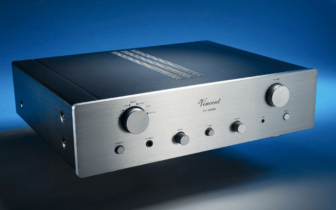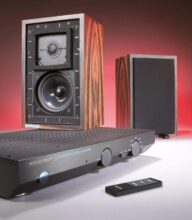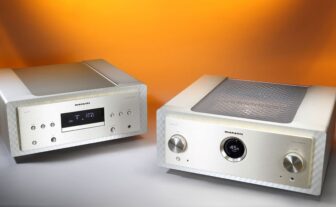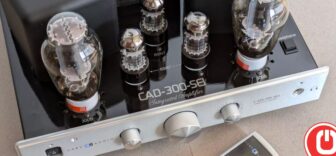Rotel Michi X5 Review
The old saying, “there’s no replacement for displacement, except for more displacement,” also applies to amplifiers: limitless power is audible and, quite literally, tangible. But not in the way you might think…
Can you hear output resistance? (A technician might ask). Can you hear sheer power? (A device fan might ask). Can you hear music? (A music lover might ask).
In this very special case, the answer is a resounding yes to all three. Yes, from the heart and with deep conviction. Because Rotel’s MICHI X5 is a true standout amplifier. Its sound sticks with you—in your ears, in your gut, in your heart, and most importantly, in your memory. It’s the kind of amplifier that might forever, or at least for a very long time, spoil you for all the other nice options out there. It’s hard, very hard, to go back to other amplifiers after this.
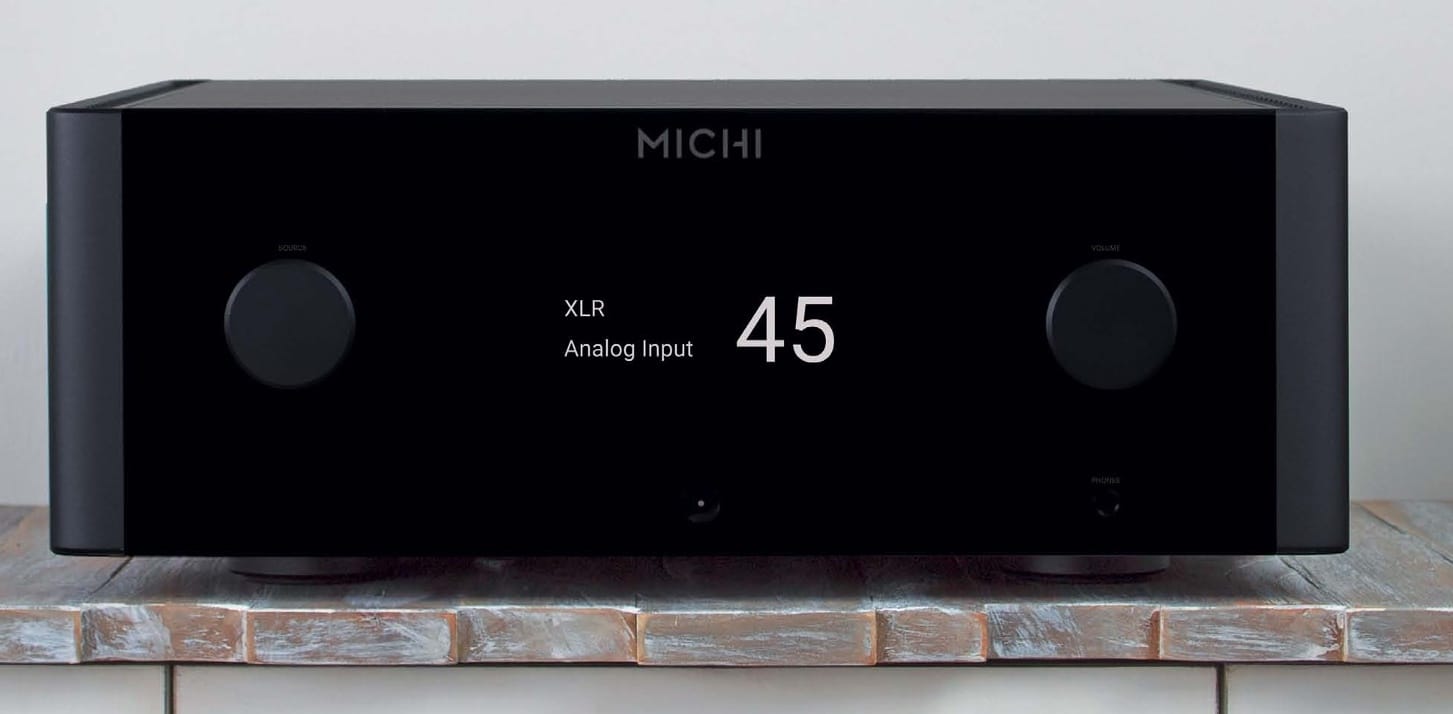
What those other amplifiers are missing is something intangible, something likely more important than sheer grip over the speaker drivers or iron-fisted control over the last millimeter of movement.
What they lack is effortlessness. That fascinating, playful ease that comes with absolute control and seemingly endless power reserves. They lack the lightness of being, the joy of playing, and the floating, almost weightless, effortless charm that turns every tone into an experience—a fresh breeze of moving air, or when needed, the palpable force of a storm.
This wonderful experience, for which we are now giving a large and very rarely awarded amount of praise, begins with its exact opposite: hard work, back-breaking labor, sweat, and groaning, maybe even a resigned request for help. After all, you’re tasked with unboxing a mighty, black, half-meter wide, more-than-40-kg behemoth, a task that makes you wish you had the same workshop crane used to lift the 6-liter V8 out of a Ford F-150 Shelby Super Snake.
The wish for a cold can of Bud might hit you as early as when plugging it in, but certainly before hearing the first note. And anyone who is more concerned with their rack’s stability during the first moments of listening is probably as cool-headed behind the wheel of a 750-horsepower beast. Speaking of beasts, these displacement monsters are becoming as rare as the MICHI, which, believe it or not, still works as analog and Class-A/B as a 1970s amplifier, though with sound far beyond what its ancestors could ever produce, just like the Shelby V8 outclassing today’s downsized engines.
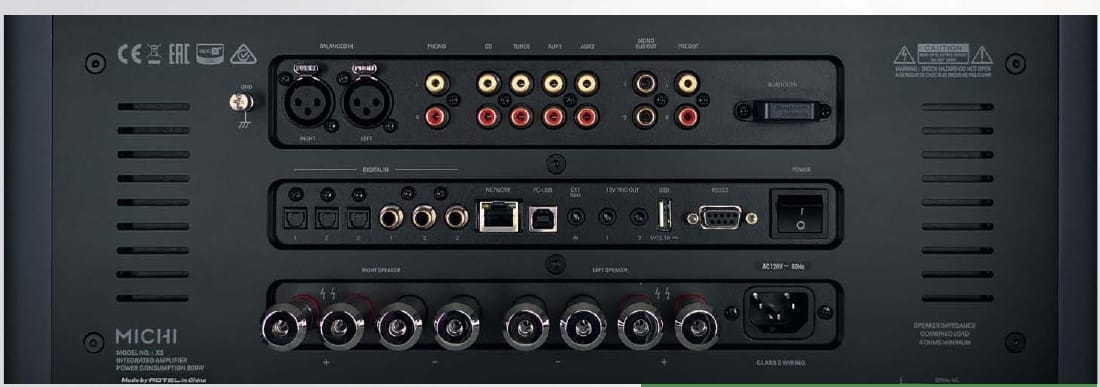
We might one day look back wistfully at amplifiers like the MICHI, whose large chassis houses massive power transformers and a hefty capacitor bank with 88,000 microfarads of capacity. In other words, it has a truly conventional dual power supply, whose copper and iron components impact the transport costs like the fuel bill of an F-150.
Of course, a unit like this should be bolted onto a solid chassis, which is why the X5’s initially unadorned but mighty case is built like a piece of polished rock.
Its smooth sides are not interrupted by cooling fins because the highly efficient A/B circuit needs only a little airflow over the small ribs between the outer walls; this is where you’ll find the two powerful amplifier boards, whose output power—600 watts at 4 ohms—can be seen just by the size of the power cables.
Inspired by P5/M8
It’s clear that Rotel’s MICHI top combo (P5/M8) also influenced the X5. Circuit designs and material choices are very similar, though the integrated amplifier doesn’t need forced cooling like the stronger monoblocks. The X5’s output stage uses six pairs of high-power bipolar transistors (MN1526/MP1526), each capable of 150 watts. The transition to A/B operation happens early, around one watt.
There’s no need to ponder the outdated and inefficient Class-A sound anymore. In terms of sound, the MICHI is flawless. So, let’s enjoy the benefits of sheer power—or, more precisely, the sophisticated, extremely low-distortion A/B output stage. It’s supported by four excellent Burr-Brown OPA1641 operational amplifiers at the input stage, and also features a balanced input.
The Rotel is also well-equipped: MM/MC phono stage, Bluetooth, 32-bit DAC, and even MQA support put the MICHI X5 at the cutting edge of audio technology. It’s remarkable that, unlike most modern designs, it wasn’t built fully digital with a Class-D amp. This makes the X5 one of the last conventional power amplifiers, a potential collector’s item, as amplifier technology is set to drastically change in the coming years.
Digital and Phono
The built-in DAC, based on the premium AK4490 chip from Asahi Kasei Microdevices, is a superb-sounding converter, outperforming many DACs in streamers and CD players. It reaches its full HD potential via USB, but only after switching from “USB Audio Class 1.0” (default) to “2.0” in the settings. As for the network port, it’s only used for firmware updates—there’s no streamer functionality here.
Regarding the phono stage, we’d recommend it more for low-impedance MC cartridges, as the 100-ohm load setting is fixed. From experience, standard MC cartridges with source impedances around 30 or 40 ohms perform better with a load of 400 to 500 ohms.
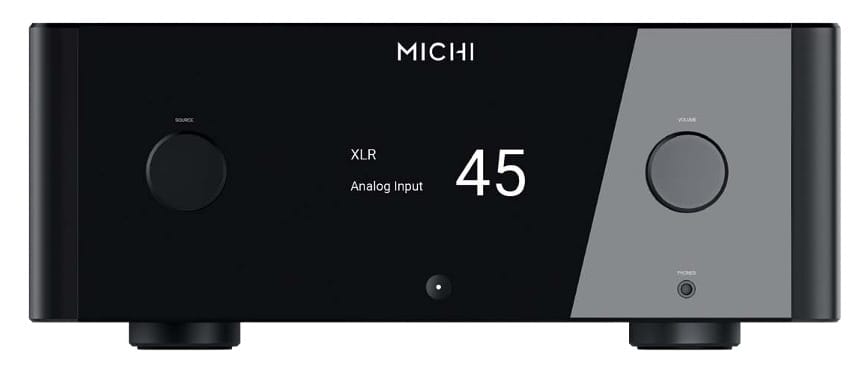
Deeper in the setup, you’ll find tone control options and, importantly, “Direct Bypass” and balance controls. Rotel deserves praise for the included slim, all-metal remote control, which is both premium and user-friendly, though, like many remotes, it doesn’t perform well in bright light.
From a technical standpoint, the headphone jack is more suited for high-impedance headsets. In terms of the speaker terminals, the lab awarded the X5 a silver medal for noise performance, though in real-world use, this is negligible. Power and load stability are beyond comparison, which was confirmed in listening tests; the MICHI’s iron grip offers a level of control and impact rarely experienced, even by seasoned testers. Challenging speakers are no match—they’re its natural domain.
The fact that this hammer also delivers fine, precise ornamentation, impeccable timing, and delicate soundscapes with ease is the real surprise. Yes, it can play softly, quietly, handling long, smooth fades just as confidently as the full-blown attack that leaves no speaker safe and no eye dry.
Responsible use of the volume knob is essential, especially since full power is available even in the subsonic range. There’s no doubt you should indulge in the X5 while such high-performance machines are still allowed. Just be prepared for the fuel bill…
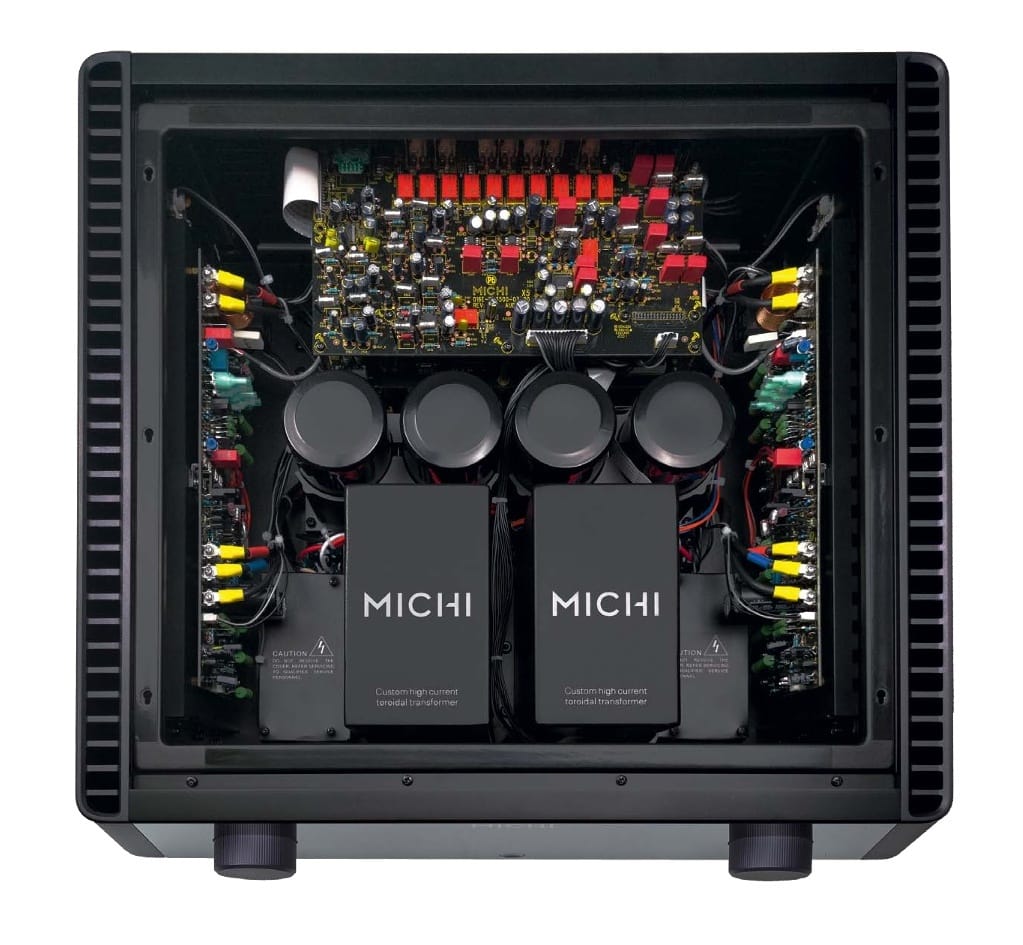
The shielded toroidal transformers form the basis of the X5’s dual power supply. After the rectifiers, four capacitors with 22,000 microfarads each smooth the pulsed DC. Just behind them is the input board with switching relays.
Measurement Diagrams
Frequency Response: Perfect, wideband without bass drop-off, excellent phono frequency response.
Distortion Analysis (k2 to k5 vs. Power): Perfect: proportionally gently rising, very low distortion with dominant k2.
Rotel MICHI X5 Tech Specs
Price: 7,000 Euros (approx. $7,400)
Distributor: B&W Group Germany GmbH
Phone: 05201 87170
Website: www.rotel.com
Dimensions (W×H×D): 49 × 20 × 45 cm
Weight: 42 kg
Practice and Compatibility
Amplifier Compatibility Diagram
- Voltage (8Ω): 59.4V
- Frequency Response: 0.1 dB
- Current (4Ω): 17.9A
Measured Values
- Sine Wave Power (1 kHz, k = 1%):
- 393 watts at 8Ω
- 668 watts at 4Ω
- Music Power (60 Hz burst):
- 441 watts at 8Ω
- 785 watts at 4Ω
- Signal-to-Noise Ratio (XLR, 2.83V at 8Ω): 81 dB
- Signal-to-Noise Ratio (XLR, 10V at 8Ω): 92 dB
- Power Consumption (Standby/Operation): 0.4W / 72W
Verdict
Technically and acoustically almost unassailable power monster with conventional circuit technology and practical, well-rounded features. A high-end DAC and a very good phono stage bring this heavyweight into the absolute top class of the best integrated amplifiers.
Ratings (Converted to 10-point scale):
- Measured Values: 9/10
- Practicality: 8/10
- Value for Money: 10/10
Final Score
- Sound Quality (Analog/Streaming/USB): 9.8/10
- Total Score: 88/100
Michi X5 Review | Rotel's High End Integrated Amplifier
The Michi X5 Integrated Amplifier is Performance Redefined packaged in an exquisite industrial design delivering an astounding ...



